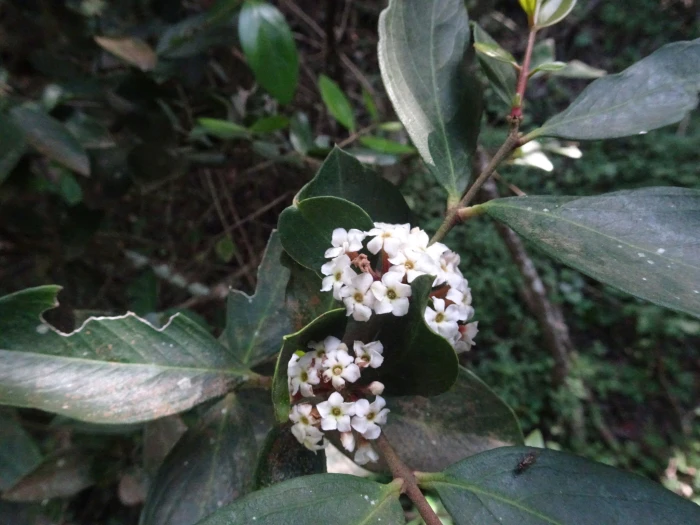Poison Arrow Tree
(Acokanthera oppositifolia)
Poison Arrow Tree (Acokanthera oppositifolia)
/
/

Thomas Koffel
CC BY 4.0
Image By:
Thomas Koffel
Recorded By:
Copyright:
CC BY 4.0
Copyright Notice:
Photo by: Thomas Koffel | License Type: CC BY 4.0 | License URL: http://creativecommons.org/licenses/by/4.0/ | Rights Holder: Thomas Koffel | Publisher: iNaturalist | Date Created: 2023-09-20T13:58:24-07:00 |

























Estimated Native Range
Climate Requirements
| • Precipitation | 25" - 30" |
| • High Temp. | 77°F - 85°F |
| • Low Temp. | 36°F - 51°F |
Summary
Acokanthera oppositifolia, commonly known as the poison arrow tree, is an evergreen shrub native to a variety of habitats including woodland, forest margins, and coastal scrub in southern and central Africa, from Cape Province north to the Democratic Republic of the Congo and Tanzania. It typically grows to a height of 2-5 meters with a similar spread, and features a dense, rounded form. The plant is known for its dark green, glossy leaves and clusters of fragrant, white to pale pink flowers that bloom in the warmer months, followed by attractive purple-black berries.
The poison arrow tree is notable for its historical use as a source of potent arrow poison, derived from all parts of the plant except for the ripe fruit. The ripe fruit is sweet and safe to eat, contrasting with the unripe fruit and other parts of the plant which contain toxic cardiac glycosides. In cultivation, it is valued for its ornamental qualities, including its showy flowers and berries, and is used in tropical and subtropical gardens. It requires well-drained soil, moderate watering, and thrives in full sun to partial shade. While not commonly grown, it can serve as a conversation piece due to its toxic properties and historical significance. Care should be taken to plant it away from areas frequented by children and pets due to its toxicity. There are no major disease issues, but it may be susceptible to scale insects and mealybugs.CC BY-SA 4.0
The poison arrow tree is notable for its historical use as a source of potent arrow poison, derived from all parts of the plant except for the ripe fruit. The ripe fruit is sweet and safe to eat, contrasting with the unripe fruit and other parts of the plant which contain toxic cardiac glycosides. In cultivation, it is valued for its ornamental qualities, including its showy flowers and berries, and is used in tropical and subtropical gardens. It requires well-drained soil, moderate watering, and thrives in full sun to partial shade. While not commonly grown, it can serve as a conversation piece due to its toxic properties and historical significance. Care should be taken to plant it away from areas frequented by children and pets due to its toxicity. There are no major disease issues, but it may be susceptible to scale insects and mealybugs.CC BY-SA 4.0
Plant Description
- Plant Type: Shrub
- Height: 6-10 feet
- Width: 4-6 feet
- Growth Rate: Slow
- Flower Color: Cream, White
- Flowering Season: Spring, Summer
- Leaf Retention: Evergreen
Growth Requirements
- Sun: Full Sun, Part Shade
- Water: Medium
- Drainage: Medium, Fast
Common Uses
Border Plant, Fragrant, Low Maintenance, Potted Plant, Showy Flowers
Natural Habitat
Woodland, forest margins, and coastal scrub in southern and central Africa
Other Names
Common Names: Common-Poisonbush, Wintersweet
Scientific Names: Acokanthera oppositifolia, Acokanthera lamarckii, Acokanthera longiflora, Acokanthera rhodesica, Acokanthera venenata, Carissa acokanthera, Carissa longiflora, Carissa oppositifolia, Cestrum fasciculare
GBIF Accepted Name: Acokanthera oppositifolia